Introduction
Next Generation Sequencing (NGS) represents a paradigm shift in the field of genetic analysis. Surpassing traditional methods like Sanger sequencing, NGS offers unparalleled speed and accuracy, making it indispensable in medical diagnostics and research. This technology’s evolution marks a significant milestone in our ability to understand and manipulate genetic information.
The Process of Next-Generation Sequencing (NGS)
Next-generation sequencing (NGS) is a high throughput method that enables rapid sequencing of the base pairs in DNA or RNA samples. NGS has revolutionized genomics and molecular biology by allowing for the sequencing of a whole human genome within a single day. Here’s a detailed look at the NGS process:
1. Sample preparation
- DNA/RNA Extraction: The first step is to extract DNA or RNA from the sample. The purity and concentration of the extracted nucleic acid are crucial for the success of the sequencing.
- Quality Assessment: The quality of the extracted DNA or RNA is assessed using methods like gel electrophoresis or spectrophotometry.
2. Library Preparation
- Fragmentation: The DNA (or RNA) is fragmented into smaller pieces, either through physical shearing (sonication) or enzymatic methods.
- End Repair and A Tailing: The fragmented DNA has its overhangs smoothed out, and an ‘A’ base is added to the 3’ end of each strand, preparing them for adapter ligation.
- Adapter Ligation: Adapters are ligated to the ends of the DNA fragments. These adapters are crucial for the sequencing process, providing a binding site for primers.
3. Amplification
- PCR Amplification: The adapter ligated DNA fragments are amplified using PCR. This step is crucial for increasing the amount of DNA available for sequencing.
- Purification and Validation: Post amplification, the DNA library is purified, and its quality is assessed to ensure it meets the requirements for sequencing.
4. Sequencing
- Cluster Generation (Illumina Sequencing): On platforms like Illumina, the library is loaded onto a flow cell where each fragment is clonally amplified. The flow cell has surfaces with oligonucleotides that bind to the adapters. Through bridge amplification, each fragment is amplified into distinct, clonal clusters.
- Sequencing Reactions: Sequencing is performed using various methods, depending on the platform. For instance, in Illumina sequencing, fluorescently labelled nucleotides are added, and each incorporation event is recorded as it emits a specific colour of light. In other methods, like Ion Torrent, semiconductor chips detect pH changes as nucleotides are incorporated.
5. Data Analysis
- Base Calling: The raw data from the sequencer is translated into a sequence of nucleotides (A, T, C, and G). Specialized software performs this process, also known as base calling.
- Alignment and Mapping: The short DNA sequences, or ‘reads’, are then aligned and mapped to a reference genome. This helps in identifying where each read came from in the genome.
- Calling Variants: The aligned reads are looked at to find differences from the reference genome, like single nucleotide polymorphisms (SNPs) or insertions and deletions (indels).
6. Post Sequencing Analysis
- Data Interpretation: The sequence data is interpreted in the context of the study. Bioinformatics tools are used for various analyses, including variant calling, gene expression profiling, and comparative genomics.
- Reporting: The final step involves compiling the results and insights gained from the sequencing into a comprehensive report.
Working Principles of Next Generation Sequencing (NGS)
The working principle of Next Generation Sequencing (NGS) is a sophisticated blend of biology, chemistry, and computational technology. It involves sequencing millions of small fragments of DNA in parallel, drastically reducing the time and cost compared to traditional Sanger sequencing. Here’s an in depth look at how NGS works:
1. Sample Preparation and Library Construction
- DNA Fragmentation: The process begins with the extraction of DNA, which is then fragmented into smaller pieces. This can be done physically (e.g., sonication) or enzymatically.
- Adapter Ligation: Short, synthetic DNA sequences, known as adapters, are attached to both ends of the fragmented DNA. These adapters are crucial for the subsequent steps of the sequencing process, serving as priming sites for amplification and sequencing.
2. Amplification
- PCR, or bridge amplification: The adapter-ligated DNA fragments are then amplified to create numerous copies. On platforms like Illumina, this is done using bridge amplification on a flow cell, where fragments are clonally amplified into millions of dense, but separate, clusters. On other platforms, like Ion Torrent, emulsion PCR is used, where each DNA fragment is attached to a bead and amplified in a water-oil emulsion.
3. Sequencing
- Simultaneous Sequencing of Millions of Fragments: Each sequencing platform uses a different method to read the sequence of bases (A, T, C, and G) in these fragments. For example:
- Sequencing by Synthesis (Illumina): This involves adding fluorescently labelled nucleotides and a DNA polymerase to the flow cell. A laser excites and image each nucleotide’s fluorescent tag as it joins a growing DNA strand. The colour of the light emitted corresponds to the nucleotide added.
- Ion Semiconductor Sequencing (Ion Torrent): This method relies on detecting pH changes. A semiconductor sensor can detect a change in pH as the DNA strand incorporates nucleotides by releasing hydrogen ions.
4. Data Analysis
- Base Calling: The raw output of the sequencing machine is a series of images (for Illumina) or pH changes (for Ion Torrent), which must be translated into a sequence of nucleotides. Specialized software performs this process, which is known as base calling.
- Sequence Alignment and Assembly: The short DNA sequences (reads) are then aligned and assembled to reconstruct the original sequence. This involves comparison to a reference genome (for alignment) or piecing together overlapping reads (for de novo assembly).
5. Error Correction and Validation
- Due to the high-throughput nature of NGS, errors can occur during sequencing. Sophisticated algorithms are used to identify and correct these errors. Validation of the sequencing results through secondary methods, such as Sanger sequencing, might also be employed for critical regions.
Techniques and Algorithms in Next Generation Sequencing
Next Generation Sequencing (NGS) encompasses a variety of techniques and algorithms, each contributing to the efficiency and accuracy of genetic analysis. Understanding these is crucial for appreciating the depth and capability of NGS technology.
Sequencing Techniques
- Sequencing by Synthesis (SBS): This is the most widely used technique on NGS platforms, notably by Illumina. SBS involves synthesizing a complementary DNA strand and incorporating modified nucleotides, one at a time. Each nucleotide type is tagged with a different fluorescent label. As each nucleotide is incorporated, a laser excites the fluorescent dye, and a camera captures the emitted light. The colour emitted identifies the nucleotide added.
- Ion Semiconductor Sequencing: Ion Torrent developed this technique to identify the release of hydrogen ions during DNA polymerization. A semiconductor sensor can detect the pH change those results from each nucleotide addition by releasing a hydrogen ion. This method doesn’t require fluorescence or optical detection, making it faster and potentially less expensive.
- Single Molecule Real Time (SMRT) Sequencing: Used by Pacific Biosciences, SMRT sequencing tracks the incorporation of nucleotides into a DNA strand in real time. It employs zero mode waveguides (ZMWs) tiny wells that contain a single DNA polymerase molecule at the bottom. During synthesis, labelled nucleotides are incorporated into the DNA strand, and each incorporation event is detected in real time based on the fluorescence.
Data analysis algorithms
- Sequence Alignment: Post-sequencing, the short DNA fragments (reads) need to be assembled. Tools like BWA (Burrows-Wheeler Aligner) and Bowtie are used for aligning these short sequences with a reference genome. BWA is known for its speed and efficiency in aligning sequences, while Bowtie is designed for large sets of short reads and is known for its memory efficiency.
- Variant Calling and Analysis: After alignment, algorithms identify where the sequenced DNA differs from the reference sequence. Tools like the Genome Analysis Toolkit (GATK) are used for variant discovery and genotyping. These tools can identify single nucleotide polymorphisms (SNPs), insertions, and deletions, which are crucial for understanding genetic variations.
- Data Interpretation and Visualization: Bioinformatics tools like the UCSC Genome Browser or Integrative Genomics Viewer (IGV) allow researchers to visualize complex genomic data. They provide a graphical view of the alignment, helping to understand genetic variants and their potential impact.
- Error Correction: Algorithms like Phred score for base calling in sequencing data help in error correction. The Phred score represents the quality of identification of nucleobases, which is crucial for ensuring the accuracy of sequencing data.
Case Study
A recent application of NGS in diagnosing a rare genetic disorder demonstrated its efficacy. The patient’s genome was sequenced, revealing a mutation previously undetected by traditional methods. This case underscores NGS’s role in personalized medicine, offering insights into patient specific therapeutic approaches.
Future prospects and challenges
Emerging trends include the integration of nanopore technology and CRISPR for real time monitoring of genetic changes. Due to the enormous volume that NGS generates, data storage remains a significant challenge. Ethical considerations, particularly in genetic privacy, are increasingly relevant.
Conclusion
NGS is a complex, multi step process that combines molecular biology techniques with advanced bioinformatics. Its ability to rapidly and accurately sequence DNA and RNA has made it an invaluable tool in fields ranging from medical diagnostics to evolutionary biology. Future developments in NGS technology promise even greater speeds, lower costs, and broader applications in genomic research.



